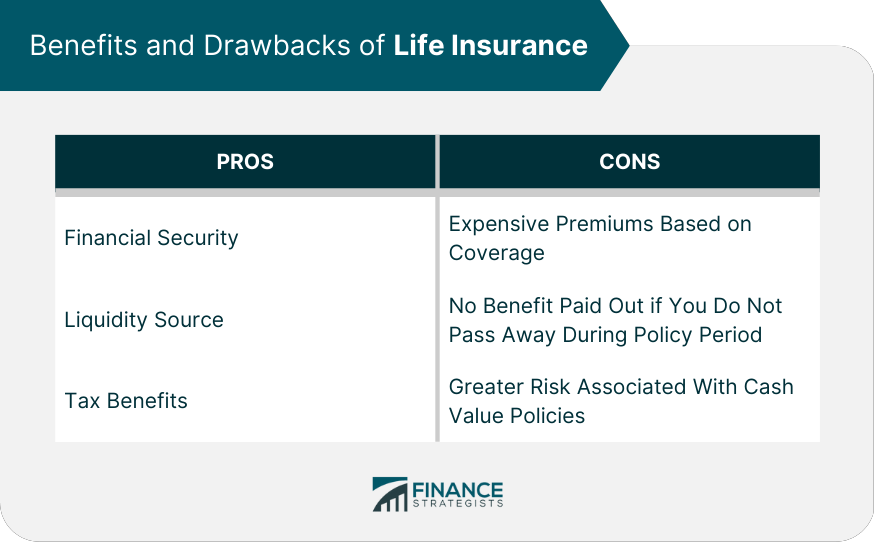Life insurance provides fundamental financial security, a promise that loved ones will be cared for after the policyholder is gone. It offers peace of mind that a family’s future is protected. However, the emotional and financial devastation after a loss can be compounded if the expected payout is denied. Many beneficiaries confront this reality, left confused and financially exposed.
While denial rates are relatively low, the impact on affected individuals is profound. Insurers operate under specific contractual conditions, which both policyholders and beneficiaries must understand. Claim denials stem from issues like misstatements, policy lapses, or beneficiary disputes. Navigating these complexities requires clear, actionable insight into rejection reasons and available recourse.
This in-depth guide, in a digestible Business Insider-style, will break down 14 common reasons why life insurance claims are denied. Our goal is to equip you with knowledge to safeguard your family’s financial future. We’ll delve into each denial cause, drawing from expert insights, to provide practical takeaways.

1. **Material Misrepresentations on the Application**When applying for life insurance, individuals provide personal information crucial for risk assessment and policy terms. This process relies on the accuracy and completeness of disclosures. False, incomplete, or misleading statements—material misrepresentations—are a leading cause of claim denials. The insurer’s decision to issue coverage is fundamentally influenced by these facts.
Misrepresentations can cover an applicant’s health, lifestyle, and financial status. Common examples include undisclosed smoking, omitted medical conditions, or downplaying chronic illness. Even minor omissions, like not mentioning past hospitalization, can be problematic if influencing the insurer’s decision.
Insurers verify information via medical exams, prescription databases, and the Medical Information Bureau (MIB). If discrepancies are found, especially within the contestability period, claims face severe consequences. The insurer may argue they would not have issued the policy, or under different terms, had they known the truth. This can void the policy, leaving beneficiaries without payout.
High-risk activities like skydiving or private aviation must also be disclosed, potentially requiring additional underwriting. Failure to reveal involvement in such activities leading to a related death provides strong grounds for refusal. Inflating income for a larger policy can also lead to disputes. Absolute transparency during application is the best safeguard against denial.
Read more about: Record Penalties and Privacy Overhauls: Investigating 13 Landmark Data Breach Fines for Major Tech Companies

2. **Non-Payment of Premiums (Lapsed Policy)**At the core of every insurance contract, policyholders pay premiums for coverage. When payments cease, the policy’s vitality is jeopardized, potentially leading to a lapse. A lapsed policy is a common reason for life insurance claim denial, leaving beneficiaries without support. The contract is no longer in force, ending the insurer’s obligation.
Most policies include a grace period, typically 30 or 31 days, during which coverage remains active after a missed payment. This allows time to rectify the payment without immediate loss. However, if the outstanding premium isn’t paid by the grace period’s end, the policy terminates. Any death after this date, before reinstatement, results in claim refusal.
Some permanent life policies offer automatic premium loans from cash value, but this isn’t universal, and cash value can deplete. For term life, lacking cash value, non-payment consequences are more immediate. If a paid-up policy is incorrectly claimed lapsed, the denial might be contestable, especially if lapse notices weren’t properly sent.
To mitigate this risk, set up automatic premium payments and regularly review payment methods. Reinstatement provisions may allow coverage restoration within a timeframe, but often require repaying past premiums and new underwriting, restarting contestability. Diligence in premium payments is crucial for policy integrity.

3. **Death Occurring Within the Contestability Period**The contestability period, typically 1-2 years after policy issuance, is a critical clause. It grants the insurer rights to investigate application information thoroughly. If the insured dies within this period, the insurer meticulously scrutinizes the application for inaccuracies, misrepresentations, or omissions. This intense review guards against potential fraud or significant misstatements.
During this window, beneficiaries often bear the burden of proving application accuracy. Insurers can challenge claims if evidence of misrepresented or concealed material facts is found. For example, undisclosed serious medical conditions leading to death within two years could result in denial. The insurer might argue they wouldn’t have issued the policy under those terms.
Death within this period doesn’t automatically mean denial, but it triggers higher scrutiny. Beneficiaries must prepare comprehensive documentation, including medical and financial records, to support the original application’s validity. Proving any inaccuracies were unintentional and unrelated to death can be crucial for overturning a denial.
After the contestability period expires, typically two years, an insurer’s ability to rescind based on misstatements significantly diminishes. Beyond this window, most states prevent denials due to application errors unless outright fraud is proven. While the contestability period is a potential minefield, once passed, the policy offers stronger protection. Awareness of this critical window is vital.

4. **Policy Exclusions and Limitations**Life insurance policies, while broad, are not limitless. They contain specific exclusions and limitations defining circumstances where the death benefit won’t be paid. These clauses are integral to the contract, preventing excessive risk exposure. Understanding these exclusions is vital, as claims can be denied if they fall under a specific carve-out.
One common exclusion is the suicide clause. If the insured dies by suicide within a certain period, usually the first two years, the insurer typically won’t pay the full death benefit, often refunding premiums instead. This deters individuals from purchasing life insurance with intent for self-harm. After this exclusion period, however, suicide is generally covered.
Policies often exclude deaths from illegal activities, like committing a crime or fleeing law enforcement. These interpretations can be broad, requiring careful legal review. High-risk activities not disclosed or covered by an additional rider, such as racing or sky-diving, may also lead to denial. Failure to disclose a high-risk hobby resulting in a related death can cause claim refusal.
Further exclusions may include deaths from acts of war or terrorism, especially for policies in conflict zones or for military personnel. High-risk occupations, unless covered by riders, can also lead to exclusions. Policyholders and beneficiaries must carefully review documents to identify all applicable exclusions. Knowing these limitations prevents significant disappointment.
Read more about: Spilling the Gas: Unmasking 12 Critical Engine Failure Points That Allegedly Emerge Right After Your Warranty Ends

5. **Beneficiary Designation Issues**A clear and correct beneficiary designation is fundamental for a smooth claim process. Uncertainty, disputes, or outdated information regarding the rightful beneficiary can cause significant delays or denials. Insurers must pay benefits to the legally entitled party. Ambiguity can trigger extensive investigation or court intervention via an interpleader lawsuit.
Frequent issues arise from major life events, especially divorce. In many states, divorce automatically revokes an ex-spouse as a beneficiary unless reaffirmed. This necessitates re-adding them or naming a new beneficiary. This common oversight leads to unintended consequences and family disputes.
A crucial caveat exists for ERISA-governed policies, like many employer-sponsored group plans. Federal law often dictates that the named beneficiary on the policy document must be honored, even if an ex-spouse, superseding state laws. Policyholders must review and update beneficiary designations promptly after marriage, divorce, or other significant life changes.
Other problems include primary beneficiaries dying before the insured with no secondary named. Proceeds might revert to the insured’s estate, prolonging payouts due to probate. Disputes between multiple claimants, changes made shortly before death, or inability to locate a listed beneficiary also contribute. Clear, current, and unambiguous designations are essential.
Read more about: Your Empowerment Guide: Navigating Simple Estate Planning Without a Lawyer to Secure Your Future

6. **Missing or Insufficient Documentation**Claiming life insurance benefits relies on a complete and accurate submission of required documents. Proper paperwork verifies the policyholder’s death and the beneficiary’s legal right to the payout. Even minor omissions or errors can cause delays, requests for more information, or claim denial. This administrative hurdle often surprises beneficiaries.
The most crucial document is a certified copy of the death certificate, usually the long-form version with the cause of death. This official record confirms the policyholder’s passing. It also helps verify that death doesn’t fall under policy exclusions like suicide or illegal activity. Without it, the claim cannot proceed.
If death occurred under unusual circumstances (accident, homicide, suicide), insurers may demand additional reports. These include autopsy results, police investigation findings, or toxicology reports. Such supplementary documentation is vital for independent verification of the cause of death. Failure to provide these can lead to extended investigations or denials.
Beneficiaries also provide proof of identity and relationship to the deceased. This includes government IDs, Social Security numbers, or birth/marriage certificates. If the beneficiary is a trust or estate, legal documents like trust agreements are needed. Failure to submit required documents promptly halts the claims process. Double-checking all submitted forms prevents major headaches.
Read more about: Gone but Not Forgotten: 13 Handwritten Poker Scores You’ll Rarely See Recorded at Casino Tables Today
7. **Alleged Fraudulent Activity**Insurance companies enforce strict anti-fraud measures because fraudulent claims threaten their stability. If a claim is suspicious, insurers launch thorough investigations. Compelling evidence of fraud leads to outright claim denial, possibly with severe legal repercussions. Fraudulent acts involve deliberate intent to deceive, unlike unintentional misrepresentations.
Fraud allegations vary, from intentionally false application information to manipulating policy terms. Examples include staging a death, submitting falsified medical records, or listing a fictitious beneficiary. Insurers are vigilant about claims filed shortly after purchase, especially if the cause of death is inconsistent with disclosures.
To detect fraud, insurers use sophisticated tools: forensic document analysis, financial audits, and expert testimony. They may also collaborate with law enforcement or state fraud bureaus. If a claim is denied for fraud, challenging it is exceptionally difficult. The burden of proof often shifts to the claimant to demonstrate legitimacy.
When fraud is concluded, the policy becomes void, and the claim is unequivocally denied. Unlike other scenarios, premiums may not be refunded. This underscores the critical importance of absolute honesty in all dealings. Ensuring accurate and truthful information at every stage is the best defense against fraud allegations.
Navigating the complexities of life insurance claims can feel like traversing a labyrinth, especially when confronting a denial. While the initial reasons we explored shed light on common pitfalls, there are several additional, often overlooked, scenarios that can lead to a rejected claim. Understanding these further intricacies is paramount for beneficiaries to advocate for their rightful payout and avoid unexpected financial strain.
Our journey continues with an examination of these less obvious but equally critical reasons, providing you with the comprehensive knowledge needed to prepare for and challenge potential denials. From the administrative nuances of claim filing timelines to the specific legal frameworks governing group policies and unique settlements, each point offers crucial insights designed to empower you with actionable information.
Read more about: Unmasking the Illusion: 12 Sophisticated Strategies Celebrities Use to Conceal Billions Through Anonymous Trusts and Shell Entities
8. **Delayed Claim Filing**While many assume there’s no strict deadline for filing a life insurance claim, timeliness is indeed critical. Insurers generally expect claims to be submitted within a reasonable timeframe, often within one to two years, depending on specific policy terms and state regulations. Delays beyond this period can complicate the entire process and, in some cases, even lead to denial, as it may raise concerns about the claim’s legitimacy or the availability of necessary evidence.
The longer a claim remains unfiled, the more difficult it becomes to gather the necessary records. Essential documents such as certified death certificates, medical reports, and proof of beneficiary status must be obtained from various sources. Some of these sources may have retention policies that limit how long they keep records, making critical information inaccessible after an extended period. This can lead to protracted investigations or outright denials if the insurer cannot independently verify the circumstances surrounding the policyholder’s death.
Furthermore, administrative complexities can arise with significant delays. An insurer may merge with another company, undergo changes in its administrative procedures, or update its internal claim handling systems. If a claim is filed many years after the policyholder’s death, the original insurer might no longer exist under the same name, forcing beneficiaries to track down a successor company. Changes in regulatory frameworks over time can also affect how an insurer evaluates older claims, particularly if policy language has been revised or governing laws have been updated, making prompt action a key protective measure.
Read more about: Don’t Trip at the Starting Line: The Worst Social Security Mistakes People Make When Filing at Age 62

9. **Improper Enrollment in Group Life Policies**Group life insurance policies, often offered through employers, present a unique set of challenges that can lead to claim denials, sometimes more easily than individual policies. These plans, especially those governed by the Employee Retirement Income Security Act (ERISA), have rigid enrollment and procedural rules that must be meticulously followed. Mistakes made by employers, rather than the employee, are a leading cause of denial in these contexts, leaving beneficiaries in a difficult position.
A common scenario is when the insured employee believed they were covered, but their employer failed to submit the correct paperwork or neglected to pay the necessary premiums. The insurer may then refuse the claim, asserting that the policy was never properly in force for that individual, despite the employee’s understanding and contributions. This administrative oversight by the employer can create a significant hurdle for beneficiaries seeking the death benefit.
Under ERISA-governed policies, federal law often dictates specific processes for claims and appeals, which can supersede state laws. If a denial occurs due to improper enrollment, navigating the ERISA appeals process can be complex and requires a thorough understanding of federal regulations. Such situations frequently necessitate legal intervention to ensure that the beneficiary’s rights are protected and that the employer’s administrative errors do not unjustly prevent a payout.
10. **Community Property Law Complications**For policyholders residing in community property states, the distribution of life insurance payouts can become surprisingly complicated, even when a clear beneficiary is named. In these states, assets acquired during a marriage are generally considered jointly owned by both spouses. This legal framework can have a direct impact on life insurance proceeds if premiums were paid using funds that are legally considered community property.
The core issue arises when a surviving spouse may be legally entitled to half of the death benefit, even if someone else, such as a child from a previous marriage or another family member, is explicitly named as the sole beneficiary on the policy. This entitlement stems from the principle that if community funds were used to maintain the policy, the non-insured spouse has a vested interest in that asset, potentially overriding the stated beneficiary designation.
Such situations frequently lead to significant disputes among claimants, often requiring the insurer to file an interpleader lawsuit. In an interpleader, the insurer deposits the death benefit with the court, allowing a judge to resolve the conflicting claims and determine the proper distribution of funds. This legal process, while ensuring fairness, can considerably delay the payout and add emotional and financial strain during an already difficult time.
Read more about: When Home Becomes a Hotel: The Heart-Wrenching Realities of Family Rent Conflicts and Financial Betrayal

11. **Improperly Executed Viatical Settlements**Viatical settlements emerged in the 1980s as a vital option for terminally ill patients to access a portion of their life insurance policy’s death benefit while they are still alive. These arrangements involve selling the policy to a third-party investor in exchange for an immediate lump sum payment, typically used to fund experimental treatments or manage end-of-life expenses not covered by traditional health insurance. However, the execution of these settlements is fraught with strict legal requirements.
The intricate nature of viatical settlements means that if they are not properly executed, the original intent of providing funds to the policyholder can be undermined, and claims can be denied or rerouted. A critical legal principle is that investors are generally prohibited from instructing someone to obtain life insurance specifically for investment purposes. Such practices, if discovered, can void the settlement and lead to significant legal repercussions for the investor.
In states like Arizona, viatical settlements are subject to specific legal requirements designed to protect policyholders and ensure ethical practices. Violations of these rules can have severe consequences: the investor may lose their entire investment, and the proceeds from the life insurance policy could then revert to the deceased’s legal heirs, not the purchasing investor. This underscores the paramount importance of following all proper legal channels and ensuring that estate planning documents are aligned with any viatical settlement.

12. **Alcohol or DUI-Related Deaths**While general exclusions for deaths occurring during illegal activities might have been touched upon, policies can also contain specific intoxication exclusions that lead to denials for alcohol or DUI-related deaths. If a policy includes such a clause, the insurer may deny a claim if it can prove that intoxication was a direct cause of the policyholder’s passing. This creates a distinct challenge for beneficiaries, as proving a direct causal link is often contested.
In these cases, the burden is typically on the insurer to demonstrate that the policyholder’s intoxication directly led to their death. This means they must present evidence, such as toxicology reports, accident reconstructions, or police investigation findings, to establish a clear causal relationship. If the insurer cannot definitively prove that intoxication was the primary cause, or if other contributing factors exist, the denial may be challenged.
Beneficiaries confronting such a denial often need to engage legal counsel to scrutinize the evidence presented by the insurer and to gather counter-evidence. A thorough legal review can help determine if the insurer’s interpretation of the policy’s intoxication clause is overly broad or if the causal link between intoxication and death is not as clear-cut as the insurer claims. These denials are frequently challenged successfully when a lawyer can demonstrate weaknesses in the insurer’s argument or prove the death resulted from other, covered factors.
Read more about: The Unforeseeable Catastrophe: How a Director’s Recklessness on Set and Other Fatal Celebrity Incidents Forever Changed Hollywood

13. **Accidental Death Coverage Interpretations**Many life insurance policies include or offer optional accidental death riders, which provide an additional payout—often double the face value—if the insured’s death is caused by specific accidental means. While seemingly straightforward, these accidental death riders are often subject to extremely narrow interpretations by insurers, significantly increasing the likelihood of a denial. Insurers frequently scrutinize these claims with intense rigor to avoid paying the enhanced benefit.
The challenge arises because insurers may attempt to attribute the death to an underlying illness, suicide, or other excluded causes, rather than a pure accident, to avoid paying the rider’s benefit. For example, if a policyholder falls and dies, an insurer might argue that an undisclosed medical condition, such as a heart attack or stroke, caused the fall, thus rendering the death non-accidental and falling outside the rider’s coverage.
Such claims require beneficiaries to provide compelling evidence that the death was, in fact, purely accidental and not the result of a pre-existing condition, self-harm, or another excluded event. This often involves detailed medical reports, autopsy results, and incident reports. Because of these stringent interpretations, legal review becomes absolutely essential to challenge an insurer’s attempts to reclassify an accidental death and ensure the full, enhanced benefit is paid.
Read more about: Unmasking History’s Grand Deceptions: 14 Shocking Events Once Dismissed as Mere Hoaxes

14. **Denials Based on Medical Malpractice (Invalid Grounds)**In a particularly frustrating scenario, some insurers may attempt to deny a life insurance claim by trying to link the policyholder’s death to undisclosed medical conditions, even when medical malpractice has occurred. This tactic involves suggesting that the malpractice was merely a symptom or consequence of an existing, undeclared health issue, rather than an independent cause of death. However, it’s crucial for beneficiaries to understand that medical malpractice itself is generally not a valid exclusion under standard life insurance policies.
An insurer’s attempt to deny a claim based on medical malpractice is often a baseless maneuver. The policy’s terms typically cover death regardless of how it occurs, unless explicitly excluded. If death results from a doctor’s error or negligence, that is a distinct event, and not typically a reason for the life insurance policy to be voided, especially if the policyholder was honest in their initial application and the contestability period has passed.
Challenging such a denial requires demonstrating that the medical malpractice was indeed the cause of death, separate from any pre-existing conditions that might have been disclosed or not. A lawyer can play a critical role in gathering expert medical testimony and other evidence to refute the insurer’s unfounded claims. They can help establish that the malpractice, rather than an alleged misrepresentation, was the proximate cause of death, thereby protecting the beneficiary’s right to the payout.
Dealing with a denied life insurance claim can be an overwhelming and emotionally draining experience. However, as this comprehensive guide illustrates, a denial is not necessarily the final word. From meticulous application to proactive policy management and, crucially, swift action following a denial, beneficiaries have multiple avenues to protect their rights. Understanding these intricate reasons for denial, coupled with informed advocacy and, when necessary, expert legal guidance, can empower you to successfully navigate the appeals process and secure the financial security your loved one intended for you.








